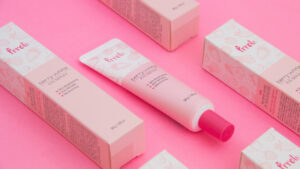Last Updated on April 25, 2025 by Packoi Team
Foil stamping presents a significant opportunity for businesses to influence and shape the buying behavior of consumers. There have been several studies that prove how the design, form, and appearance of packaging can sway the purchase choice of customers. The more that the packaging stands out, the higher the chances that customers will end up buying it.
Foil printing is a great way to create eye-catching packaging that boosts sales, using metallic colors like gold or silver to grab attention. It’s also ideal for marketing materials, invitations, and greeting cards. This article covers the types, uses, and benefits of foil stamping to help you use it strategically.
What Is Foil Stamping?
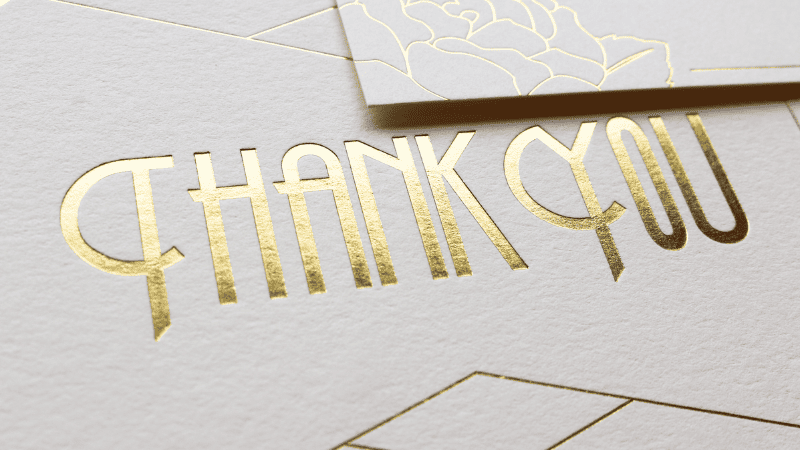
This type of printing technique is known by many names. Each of the names describes the process that it follows in the design-making process.
Foil stamping is the most common reference because the process involves stamping a thin layer of film with a foil design onto another surface by using heat and pressure. This process is also the reason why it’s called hot stamping or hot foil stamping.
Not only that, but the fact that it doesn’t use ink means the process remains dry the whole time, which is why it’s also referred to as dry foil stamping.
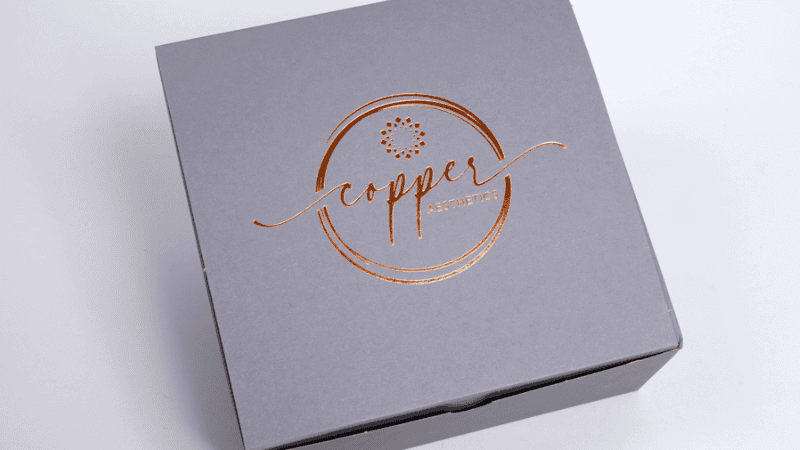
The key element in this printing method is the film that carries the design. It usually has five layers:
- Metal layers
- Lacquer layers
- Image layers
- Release layer
- Polyester carrier layer
At the very bottom is the outer adhesive layer that is activated when heat and pressure are applied to the film, which is crucial to the transfer of the design to the intended surface.
Usually, the final output is stamped flat onto a surface. This is why it can sometimes be called foil stamping. Despite being flat, the design can be given texture or depth, depending on the type of foil material used.
The Foil Stamping Process: How Does It Work?
This specialty printing process uses a machine where carved metallic plates are attached, heated, and stamped to bond one foil color to another surface.
The foil stamping process begins with the metal die that’s made of either copper, brass, or magnesium. It’s shaped to match the design before it’s attached to the machine. The film that carries the foil print is then cut down as heat and pressure are applied.
Once the pressure is lifted, the design stays on the chosen surface, and the excess foil is then peeled off to get a clean design.
2 Types of Foil Stamping
There are 2 main foil-stamping methods that you can choose from. Understanding these two types will help you choose the hot stamping process that’ll give you the design output you’re aiming for.
Take a closer look at how the methods differ from each other.
Traditional Foil Stamping
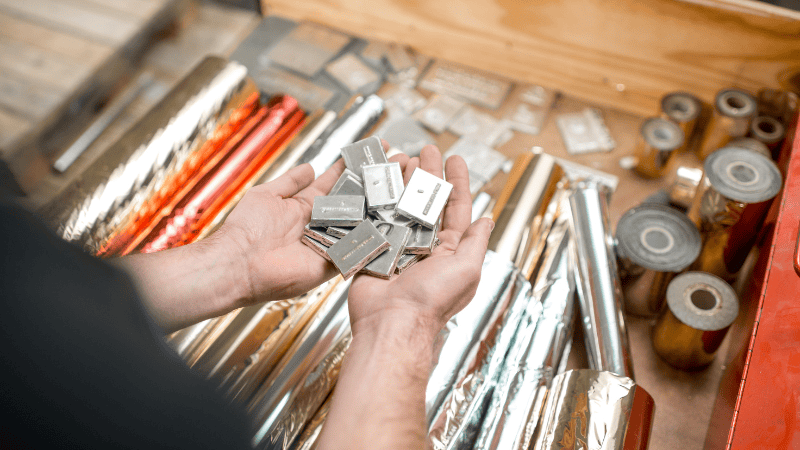
In the traditional foil stamping process, the design is engraved on the metal or foiling die first. Then, the foil-stamping machine heats brass dies and stamps the design onto the print surface, where it’s cut into the desired shape.
If there is more than one color in the design, separate metal dies are used for each color and applied on top of each other to achieve the final output.
Digital Foil Stamping
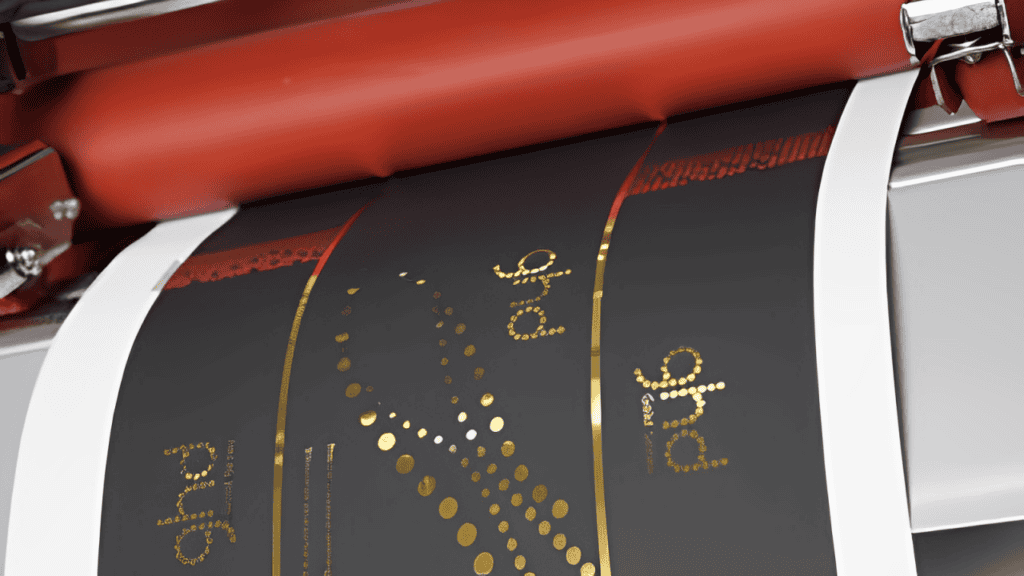
The digital foil stamping method uses a similar-looking machine to the more traditional foil stamping method. However, it doesn’t use a metal die to attach the digital foiling design.
In this particular digital foil stamping application, the graphic design is digitally printed directly to the chosen surface through a special foil that sticks to the material. That means there’s no need to create a metal die and only one printing process, even if the design uses multiple colors.
7 Types of Foils and How to Pick the Right One for Your Packaging
Different types of foils can be stamped onto packaging surfaces. Initially, the preferences were gold and silver. Over the years, other metallic ink foils have been used to allow more creative and intricate designs.
Understanding your options will help you realize the design potential that your packaging can have. Here are some of the foil types that you can consider to make your packaging stand out.
1. Metallic Foil
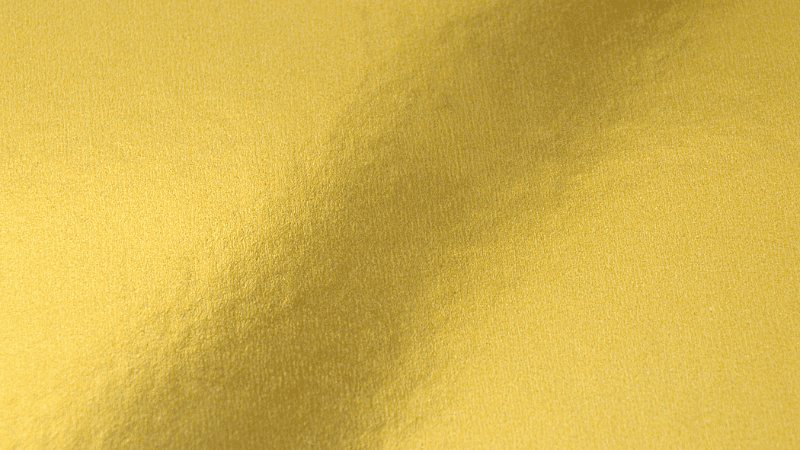
This is the most common type of foil used for packaging. It’s characterized by the reflective surface of metals like gold and silver. These are ideal for jewelry boxes, product packaging, etc.
2. Pigmented Foil
This can either be glossy or matte foil. Glossy foils are those with a vibrant shine. This makes them similar to metallic foil, but they use other colors like red, blue, and yellow. These are created with a reflective finish to achieve a smooth metallic look.
Matte foil, on the other hand, shows a more subdued color that’s non-reflective. When applied correctly, it can look quite elegant against paper and plastic surfaces. Pigment foils are a great option for cosmetic products.
3. Holographic Foil

This type of foil creates a 3D effect. It also shows a rainbow sheen when held against a light source at the right angle. Holographic foils are ideally used for credit cards, bank or currency notes, and ID cards because they can help prevent counterfeiting.
The holographic textures can be created with specific patterns and designs to distinguish what is real from fake.
4. Pearlescent Foil
This type of foil is characterized by a pearly shine that’s more opalescent than shiny. While metallic and pigmented foil looks elegant, pearlescent foils are better at achieving softer and more sophisticated looks.
This is why it’s a popular choice for wedding invitations and greeting cards. These can be created with a translucent or transparent finish.
5. Textured Foil

This foil does not just provide a delightful visual of the design. It also stimulates the sense of touch. It creates a highly sensory experience that can leave a lasting impression on customers. It’s a great design option for toy products because it stirs the curiosity of children.
Special Effects Foil. This foil is specially designed to have a variety of patterns like stripes, sparkles, etc. Sometimes, holographic foil falls under this type. Y
ou can use it to customize your packaging so it reflects your brand better. This is great for luxury brands that want to incorporate their logo into the foil design.
6. Transparent Foil

This allows visibility through the foil material. That means when you choose this type of foil, make sure the design complements the surface that it’s attached to. So, if you use it as the design of a product box, take note of the surface color. It will appear as part of the design of the transparent foil.
7. Scratch-off Foil
This is a foil type that can be scratched off using a coin or fingernails. The top part is not permanently attached to the surface, making it easy to scratch off to reveal a hidden design or message underneath.
This is commonly used on game cards, phone cards, and lottery tickets. This can be a fun design to adopt when creating packaging materials for toys.
What Are the Benefits of Foil Stamping In a Packaging Design?
The main benefit of using these foil stamping methods in packaging designs is that it helps increase sales. The idea is to use hot stamping to create a foil design that is shiny, elegant, and luxurious enough to elevate the value of a product.
Since metallic foils are shiny, they can catch the eye of customers even from afar, which starts the whole buying process.
Once you get the attention of your target market, your intricate designs are given the chance to communicate with them. You have the opportunity to impress them and provide information about your product and how it can solve issues that your customers struggle with.
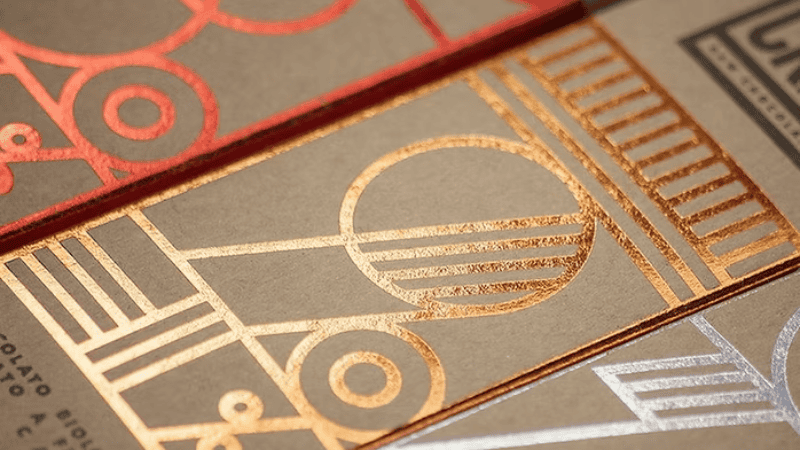
This is how you can effectively increase the revenue of your business.
Apart from that, hot stamping can be applied in several ways. You’re not just tied to metal foils like gold and silver. You can create a foil print design using common colors like red, green, blue, yellow, and even transparent. Any color can now be transformed into flat foil stamping to have a metallic shine and finish.
This is how your packaging stands out even among other brands. The different applications also provide versatility. You can print several metallic colors at once, thanks to the digital foil printing method.
Even with a non-metallic finish, the shine can be manipulated to be glossy, matte, opaque, pearlescent, or translucent. This widens the opportunity for you to customize a design that’s unique to your brand.
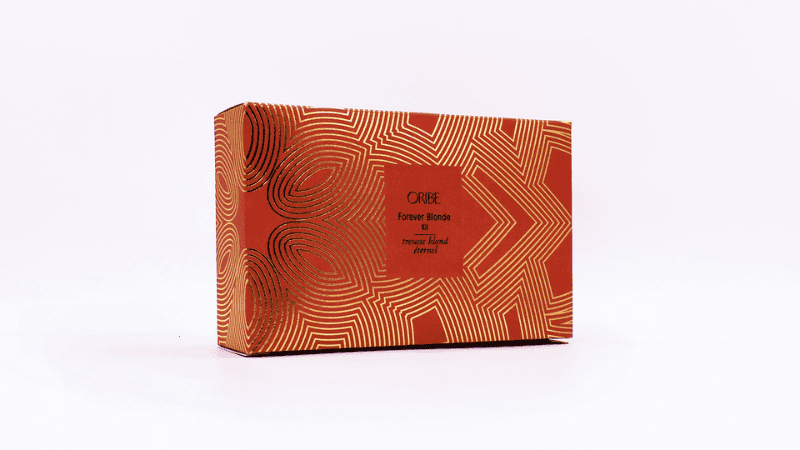
6 Applications of Foil Stamping
Hot foil stamper machines can accommodate various applications that you can use to improve your business. From banknotes to wedding invitations and ID cards, you can put them on a foil stamping machine to give it a shiny design. You can also have scratch-off foil stamped on lottery tickets if that’s what you need to market your product.
You can get incredible design output for the following applications.
1. Packaging
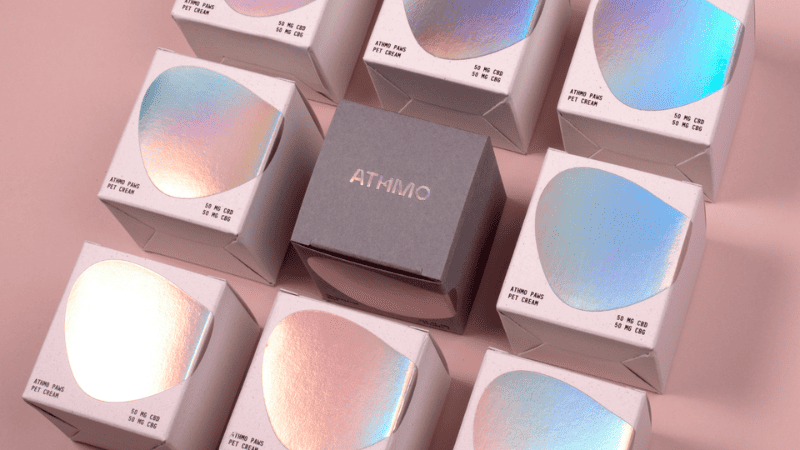
From product boxes to cosmetic pouches and food containers, you can use hot foiling to create a shiny finish for your product. Even shipping and mailer boxes can benefit from this. It can position your brand to look more luxurious and sophisticated.
2. Printing
This refers to all types of print materials, like novels, magazines, textbooks, children’s books, and even coffee table books. It’s not just the book cover that can be printed with foil stamping.
Authors can have a printed surprise inside the book – maybe at the centerfold, where readers can see intricate foil prints that bring greater meaning to the message being read.
3. Marketing Materials
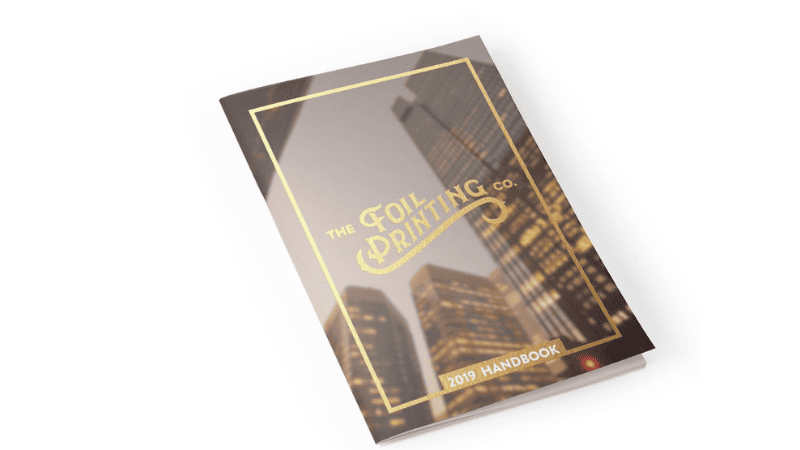
These can benefit from the eye-catching characteristics of foil stamping. Brochures, catalogs, pamphlets, and even booklets will get the attention of people, so they’ll be more interested in reading what’s within. Make your marketing tools visually appealing so people are compelled to pick them up.
4. Labels and Tags
A simple kraft gift box can be brought to life if you can add a metallic design on the label or tag that goes with it. This will add a level of sophistication to the gift, which can also add value to what is given.
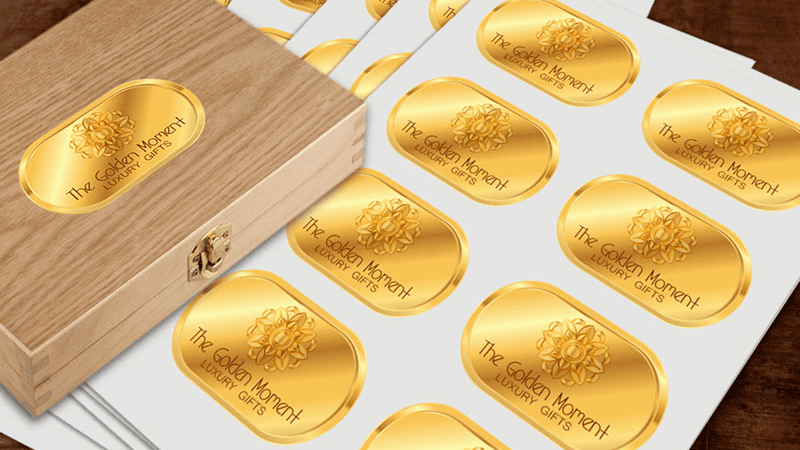
5. Special Effects Foil
Impress your customers, colleagues, and partners by going all out with your foil print design. You can use holographic designs that seem to move and change when viewed from different angles.
This can be used as a campaign by itself, as long as you are creative enough to connect the design with your intended message.
6. Fashion and Textiles
Clothing, bags, accessories, footwear, and other textile products can also use foil as a design element. Even if you don’t have a luxury brand, you can create a high-end line that uses foil stamping extensively. It can elevate the value of your brand and attract a new group of customers.
Foil Stamping vs. Embossing: A Comparison
Foil stamping and embossing are popular printing techniques that add a premium feel to packaging. While they serve different purposes, both can be used individually or together to enhance visual appeal and texture.
| Technique | Description | Process | Result | Can Be Combined? |
|---|---|---|---|---|
| Foil Stamping | Heat transfer of foil using a heated metal die | Uses heat and pressure to activate adhesive and apply metallic foil to the surface | Shiny, reflective design | Yes, with embossing |
| Embossing | Creates a raised, 3D textured design | Two dies press together to deform the surface, optionally with ink or foil | Textured, elevated surface design | Yes, foil can be added to design |
These techniques not only improve the look and feel of packaging but also add a touch of sophistication. By combining foil stamping and embossing, you can create packaging that is both visually stunning and tactilely engaging.
Conclusion
Foil stamping has a transformative effect on any design. It can elevate the value of your packaging and the product within. Feel free to use it on packaging, printing, and marketing materials to promote your brand. The final design can successfully stand out even in a crowded market.
Let Packoi Printing Help with Foil Stamping Design
If you want to infuse elegance into your packaging design, explore the possibilities offered by foil stamping. Take advantage of the unique opportunity to create a visual masterpiece.
Packoi Printing has years of experience in creating eye-catching designs in packaging and marketing materials. We can help you apply hot foil stamping to positively affect your brand’s reputation and perception. Our design team is skilled and equipped to help you find the right packaging solution for your brand.
Contact us so we can discuss the options available to you. We’ll get back to you with a fair quote in no time.


